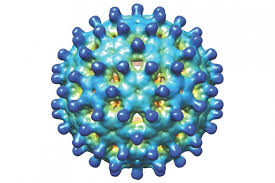Indiana University researchers have made an important step forward in the design of drugs that fight the hepatitis B virus, which can cause liver failure and liver cancer. ”The drug could attack hepatitis B virus on multiple fronts-preventing replication and killing new copies of the virus,” said senior author Adam Zlotnick, a professor in the IU Bloomington College of Arts and Sciences’ Department of Molecular and Cellular Biochemistry.
A virus reproduces by hijacking a host’s cellular machinery to produce more of the virus. The majority of viruses protect their genetic material-DNA or RNA-inside a protein shell called a “capsid.” The research leads to discovery of a class of molecules called core protein allosteric modulators, or CpAMs, that disrupt capsid protein assembly.
CpAM molecules attack viruses by causing their shells to assemble incorrectly, interrupting the life cycle of the virus. Previously, CpAMs were seen as only able to disrupt a virus during formation of the capsid, after which its DNA was protected inside a hard casing.
To make their discovery, researchers bound the CpAM to a chemical called TAMRA-a crimson-colored dye used in some red lipstick-to make it fluorescent and easier to detect in experiments. Using cryo-electron microscopy, they found the small CpAM molecule could make the large, soccer ball-shaped virus capsid bend and distort.
The big implication is viral capsids aren’t as impenetrable, if this type of interference works against hepatitis B virus, it might also work against other viruses. About half of known virus families have soccer ball-like capsids; examples include polio and herpes. This study may lead to better treatments against them since the mechanisms behind capsid disruption could lead to drugs against any of them.
haleplushearty.blogspot.com


